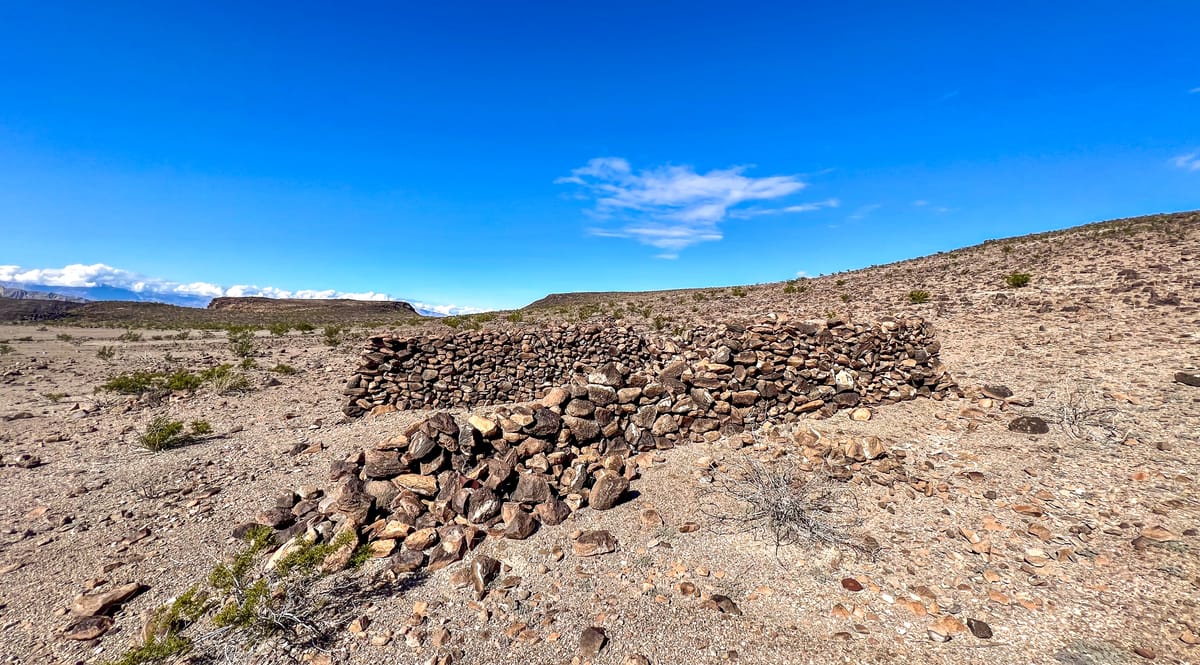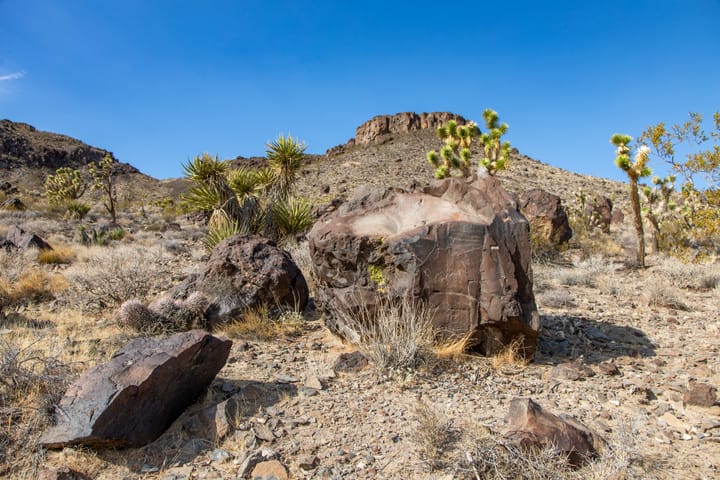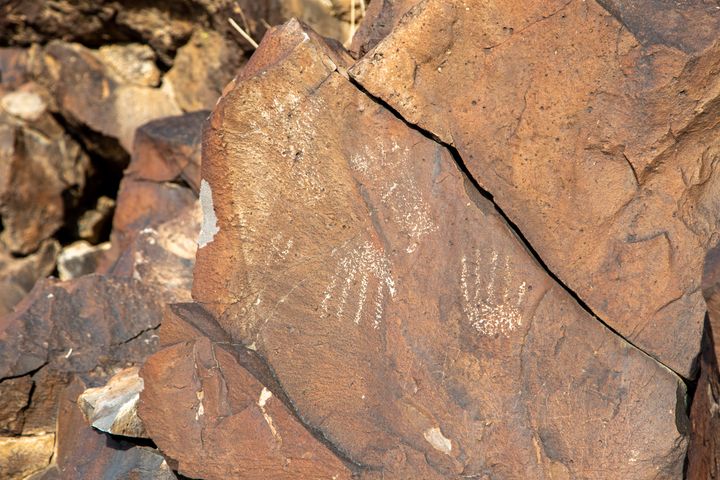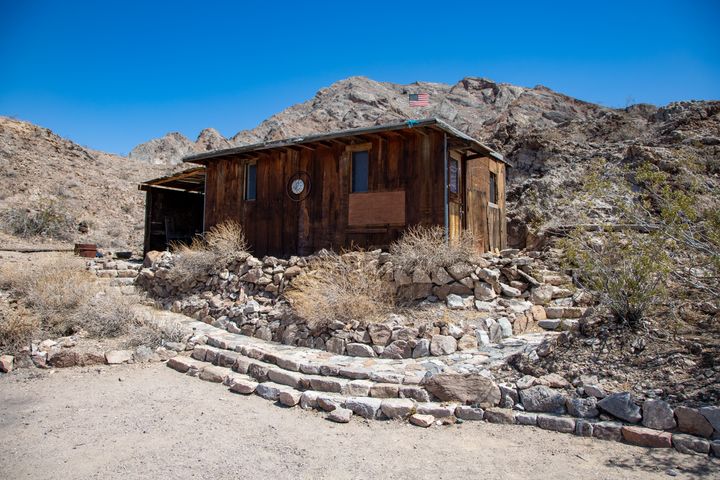I came upon this site in a rather odd way: a video from an ultralight pilot flying over DV that came up on my YouTube feed last year. He passed over some odd looking ruins somewhere in the eastern part of the park that I glimpsed on the background. After some research on Google Earth I managed to track down the location. It is just about a mile outside of the Eastern park boundary and on the opposite side of the mountain from the semi-ghost town of Ryan. Or at least where Ryan is on my current maps. The old circa 1914 map featured below shows Ryan further east and the towns of Colemanite & Devar (Devair) where Ryan is shown on current maps.
Guy Starbuck turned me on to a paper written by Mary Ringhoff entitled "Life & Work in the Ryan District, Death Valley California 1914-1930" that described the railroad construction and camp thusly:
"The DVRR was a narrow-gauge (3 foot wide) line... It was just for moving ore from the six Hillside Group mines to Death Valley Junction... The route was a challenging one, winding along steep hillsides and requiring large trestles to span gullies. A crew of about 225 graders and 100 tracklayers worked until November (1914), when they reached the Biddy McCarthy and the new camp and terminus named Devar (sometimes mistakenly called Devair, after a misprint on a map), a contraction of “Death Valley Railroad.” Most of the men on the grading crew were Mexican American, hired from Los Angeles... Some of the DVRR workers constructed at least two temporary camps along the route, using locally available cobbles and boulders to build dry-laid rock structures roofed with canvas. One camp is below a large trestle east of Travertine Point, near the spot where the DVRR began to curve around the north end of the Greenwater Range, and the other is about two miles north of Ryan. This second camp is colloquially referred to by some as “Mexican Camp.”
This camp is just NNE of the 180deg turn in the upper left of the map below.
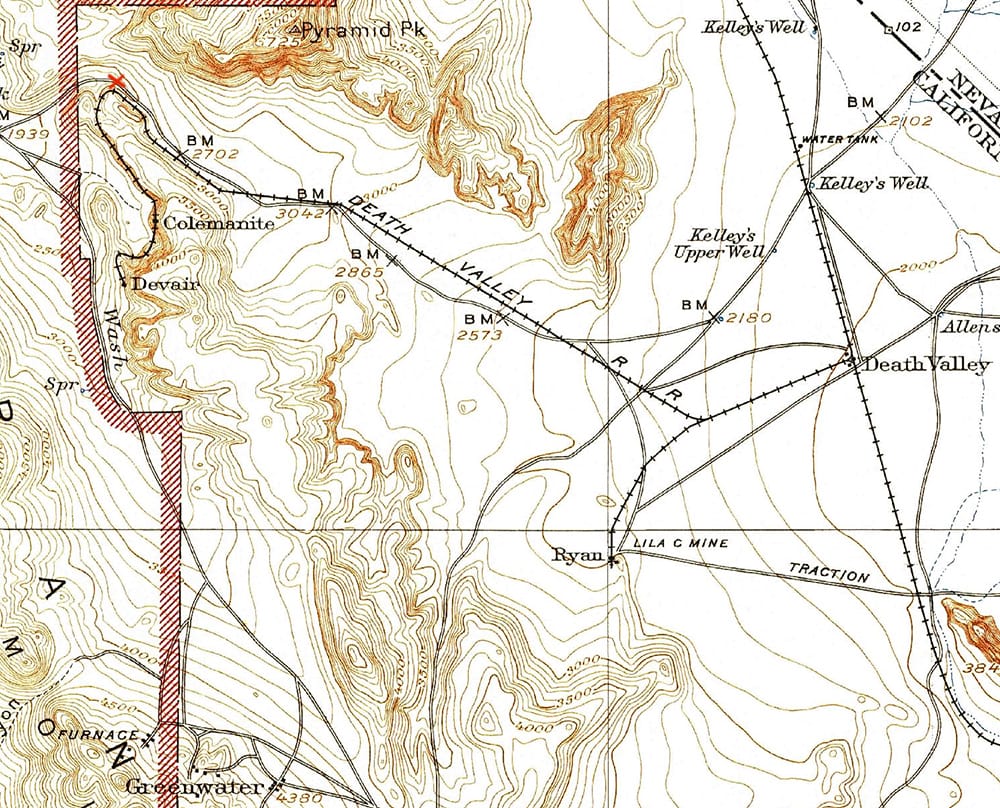
The railroad was originally used to haul various ore from the mines surrounding Ryan down to Death Valley Junction. But starting in 1927 and continuing into the 40s, as the ore started to run out, the bunkhouses in Ryan were repurposed as the Death Valley Hotel and the DVRR was used to haul tourists in from Death Valley Junction, instead of hauling ore out.
The set-up of this site is very haphazard, as one would expect from a labor camp that likely had little to no planning. A satellite view is below. There are nearly 40 structures still visible, with 2 or 3 being larger ruins and about 36 being smaller ruins. The larger ruins I'll detail below. The smaller ruins are quite small: remaining walls are about 2ft high and the interior space is a scant 3-4ft by 5-7ft. One would think they're not really larger enough for comfortable human occupation. The entrances generally face Southeast towards the railroad, but not all of them.
Satellite view. The ruins cover about 1/4mi. Top of this image is NNE, with the DVRR at the bottom.
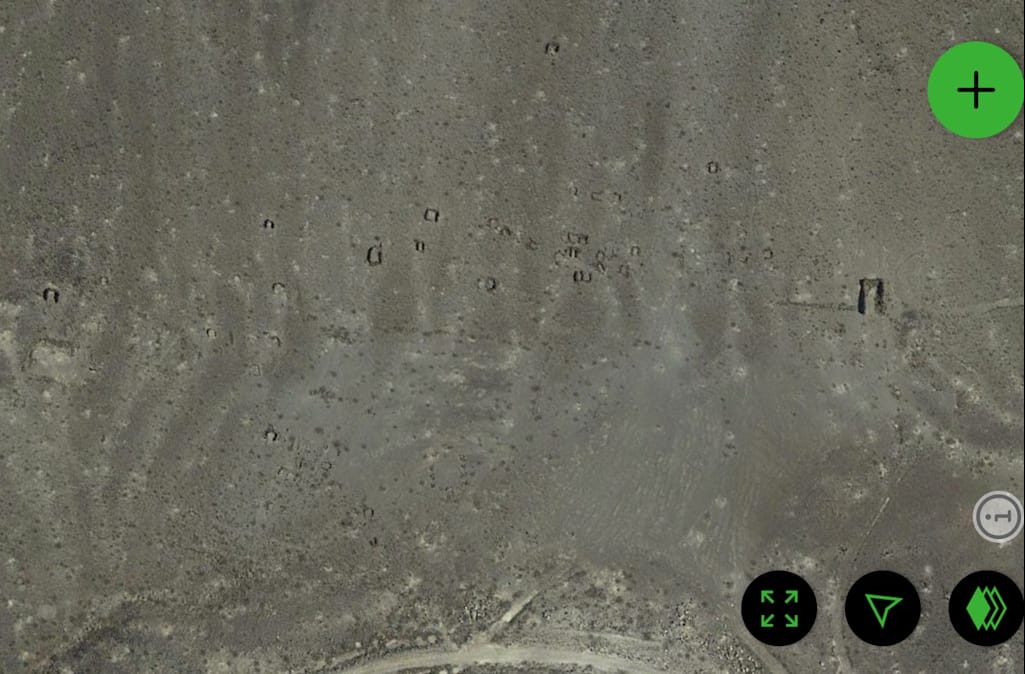
Old RR grade that was built by the workers housed here. That definitely took some work!
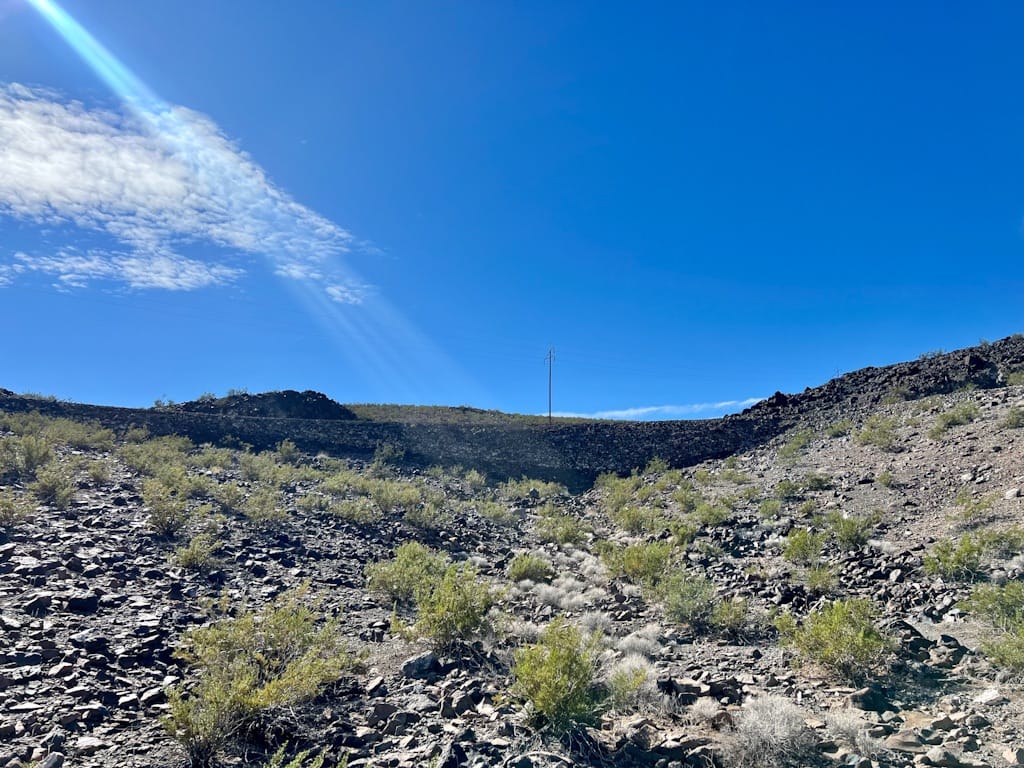
Cleared area at the south end of the site.
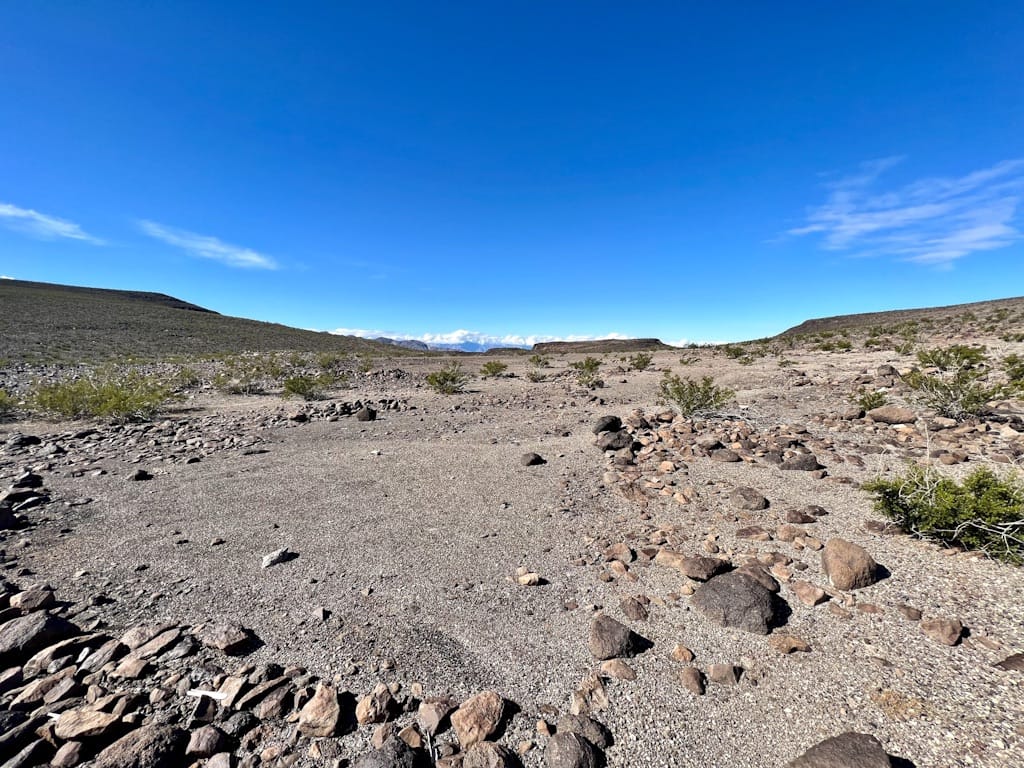
Classic purple glass helps date it.
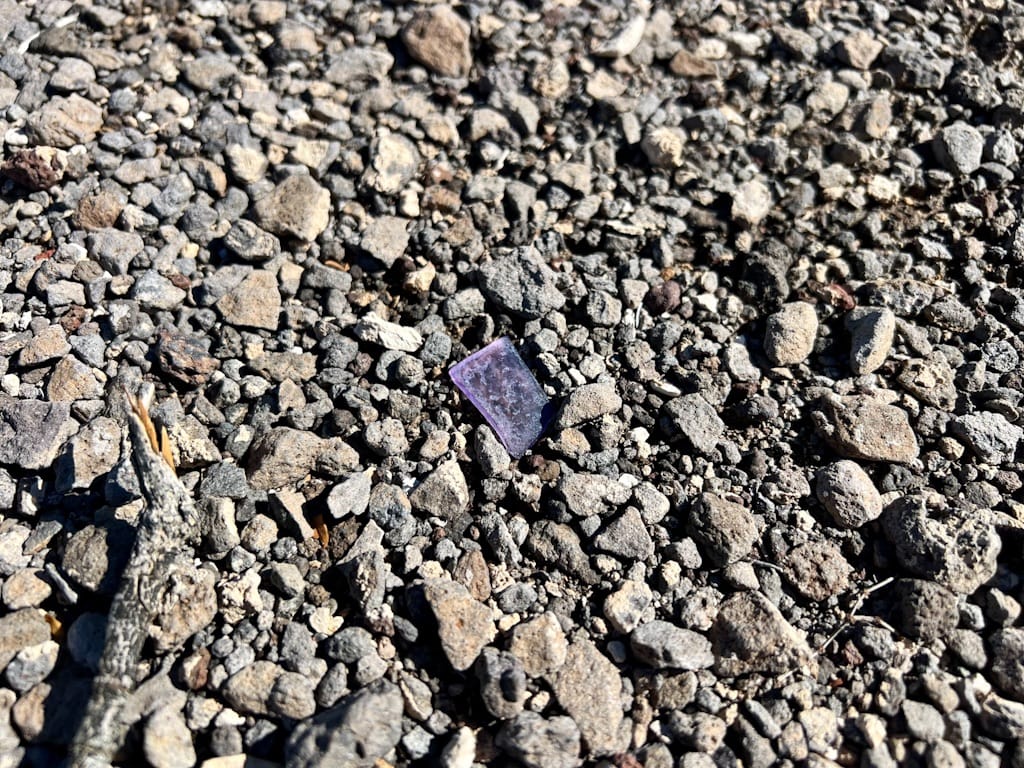
This is one of the larger structures. About 12-15ft wide and 15-20ft long. Walls remain at about 4-5ft high.
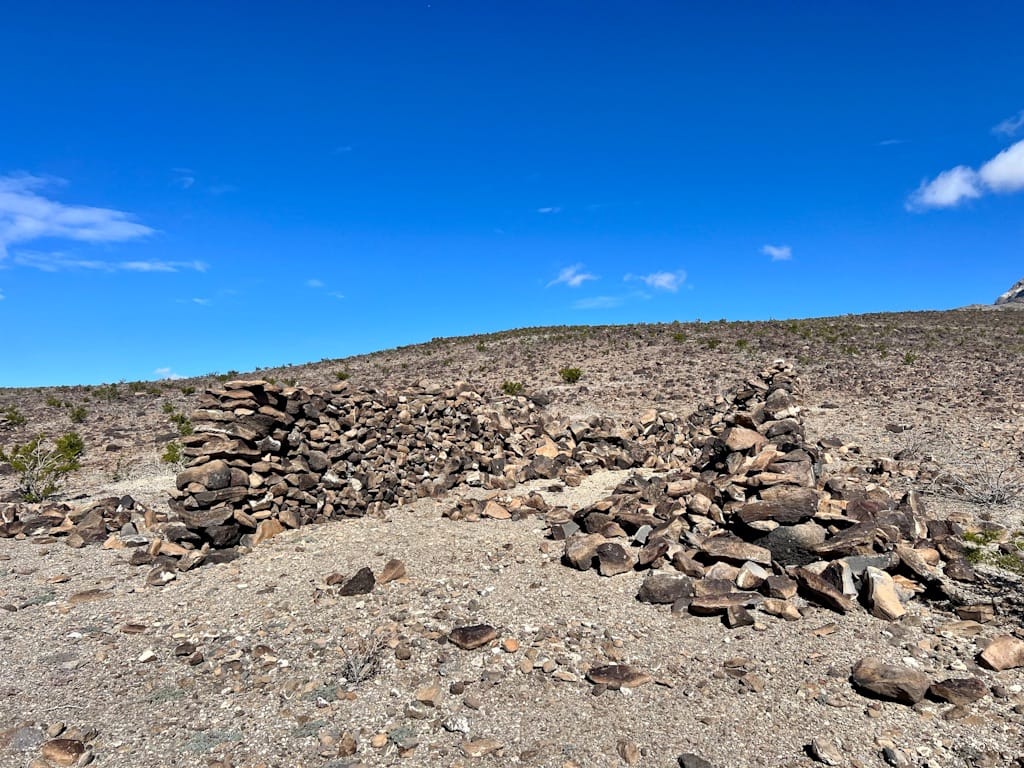
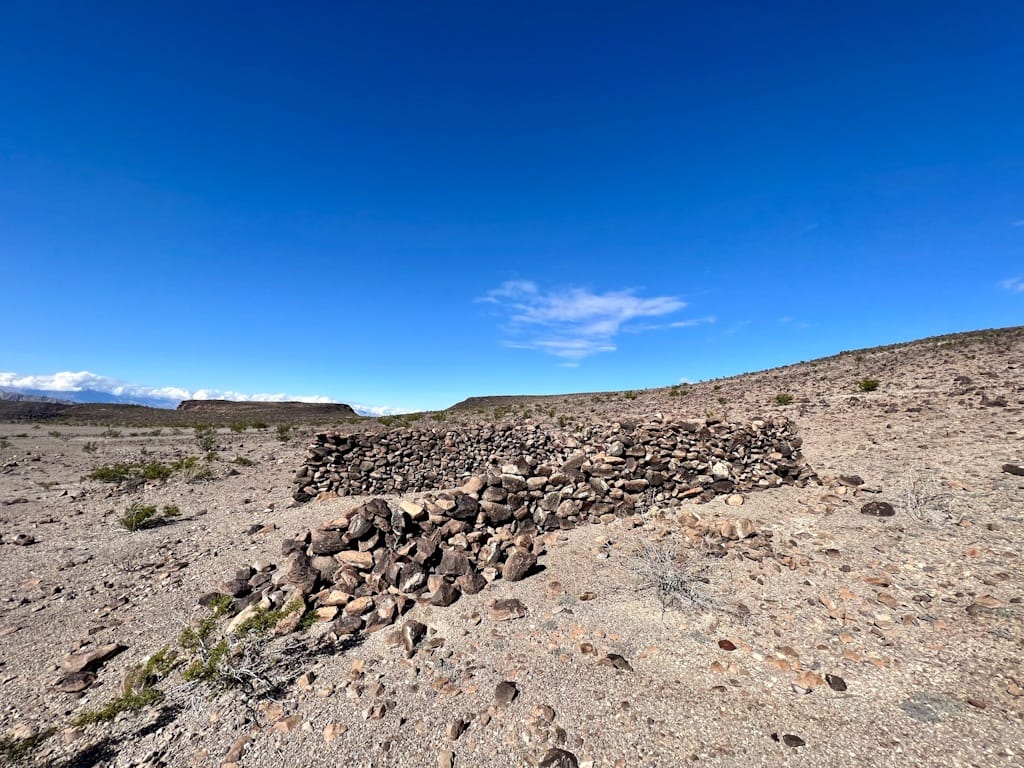
Area is covered in these old tobacco tins.
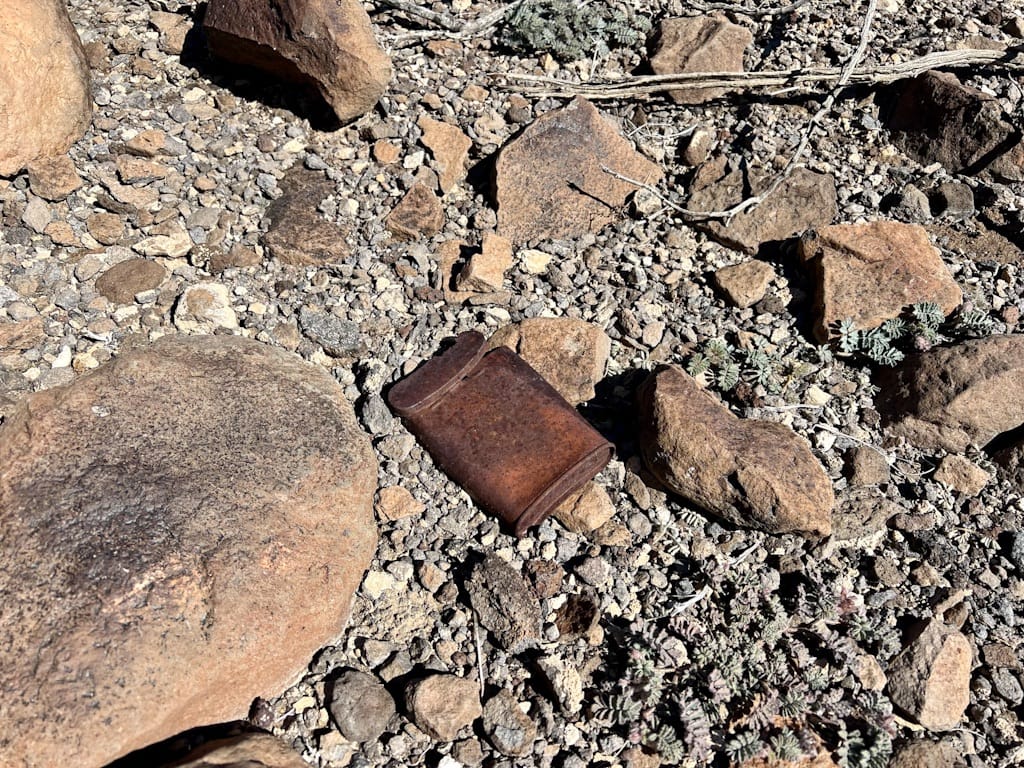
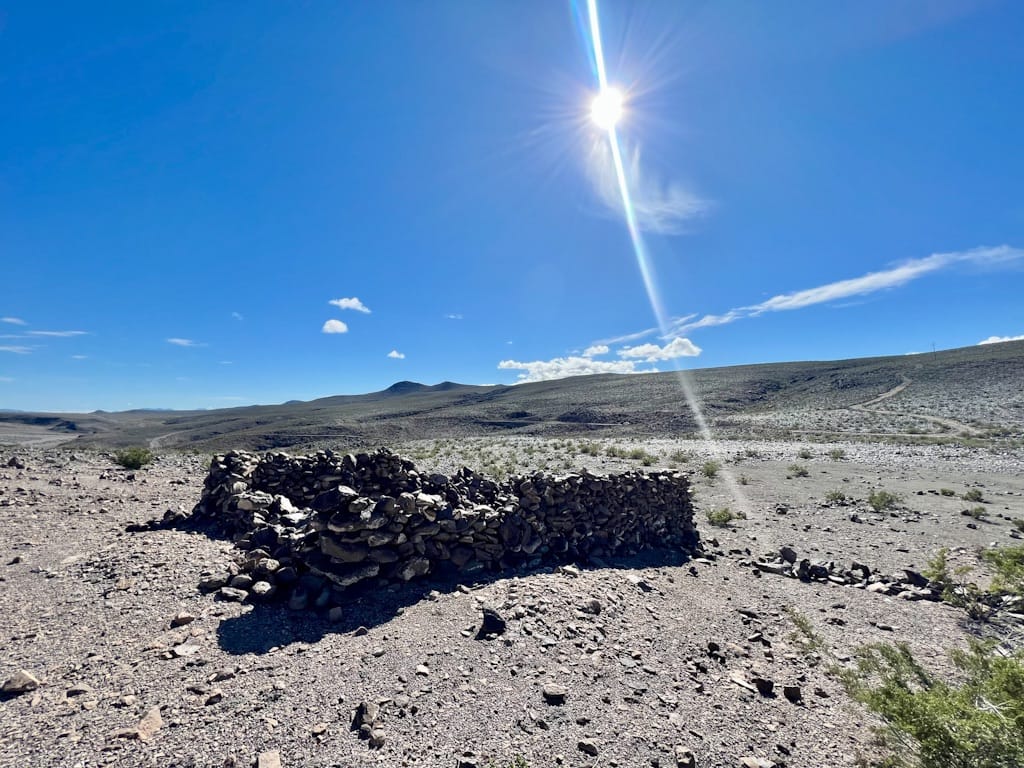
One of the smaller structures that sits oddly far from the rest. I guess this worker valued his privacy. The tight turn around the end of the Greenwater Range can be seen in the distance.
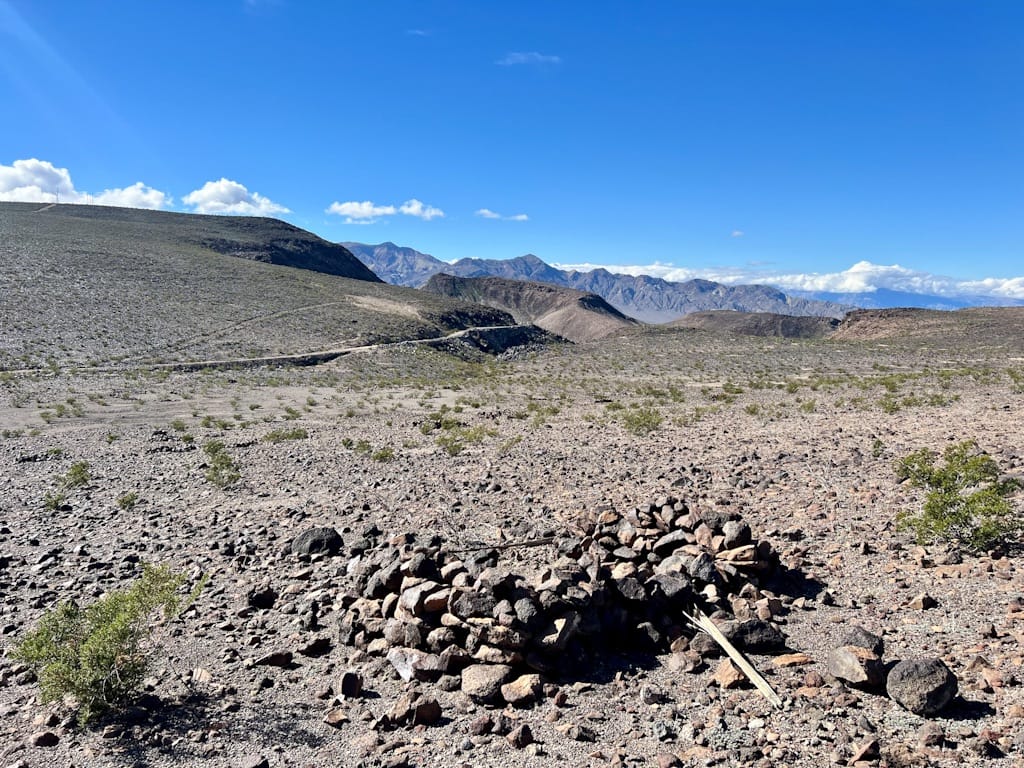
Part of the central group.
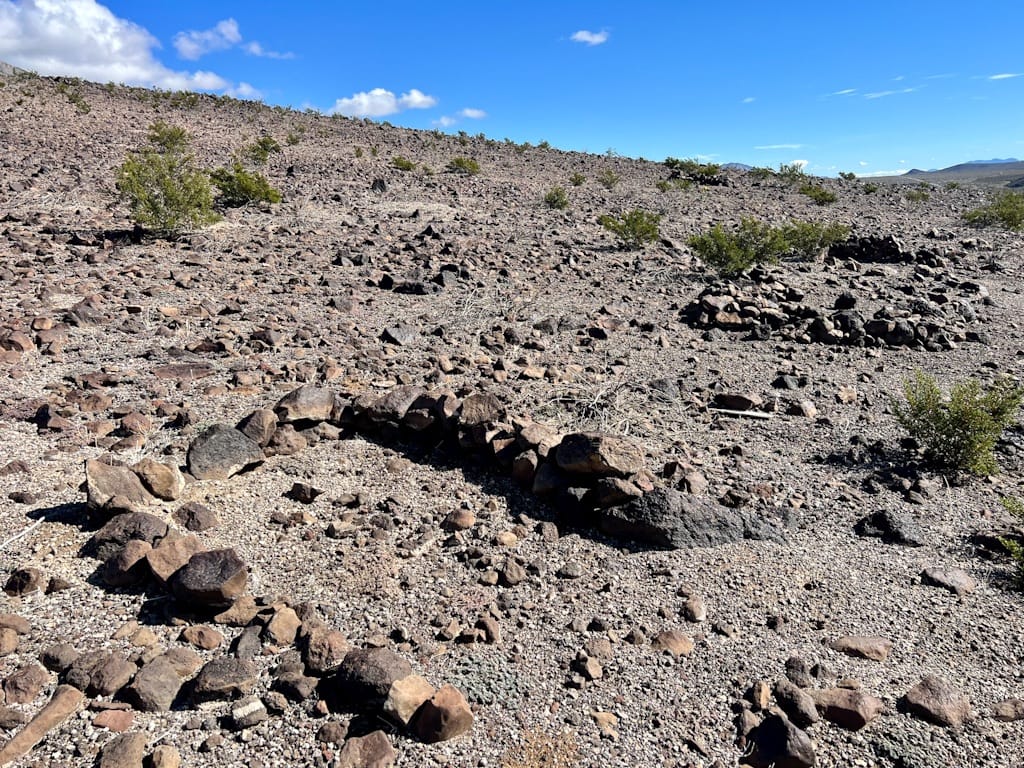
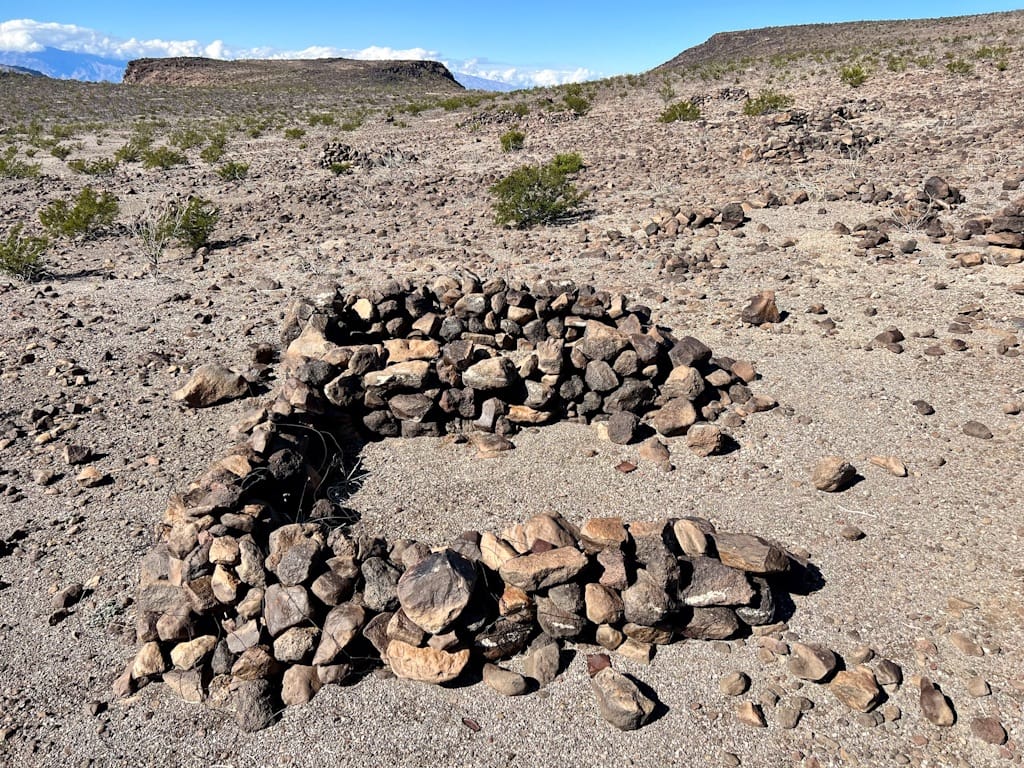
The only double ruin, opening facing away from the railroad.
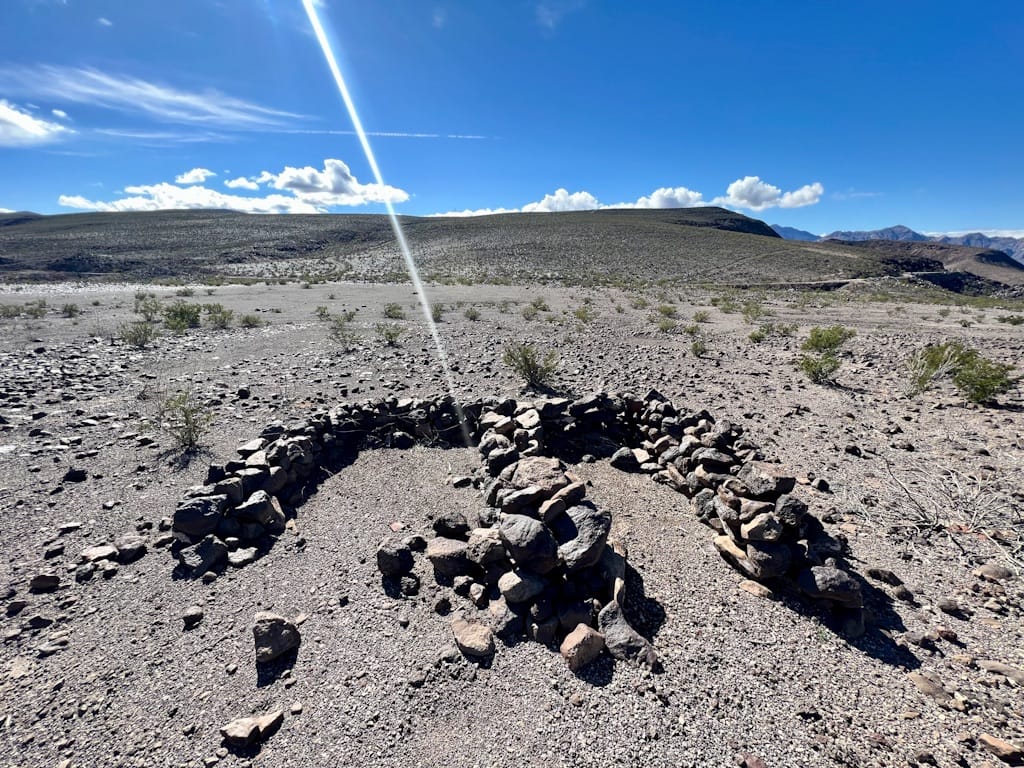
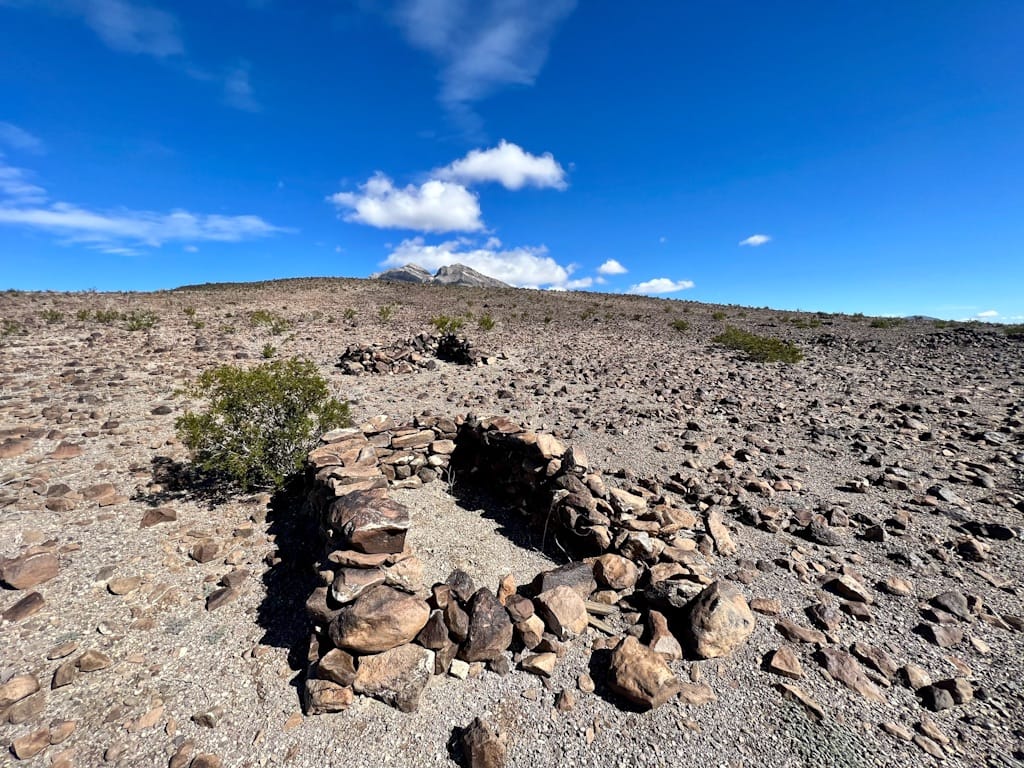
This was one of the more oddly shaped smaller structures.
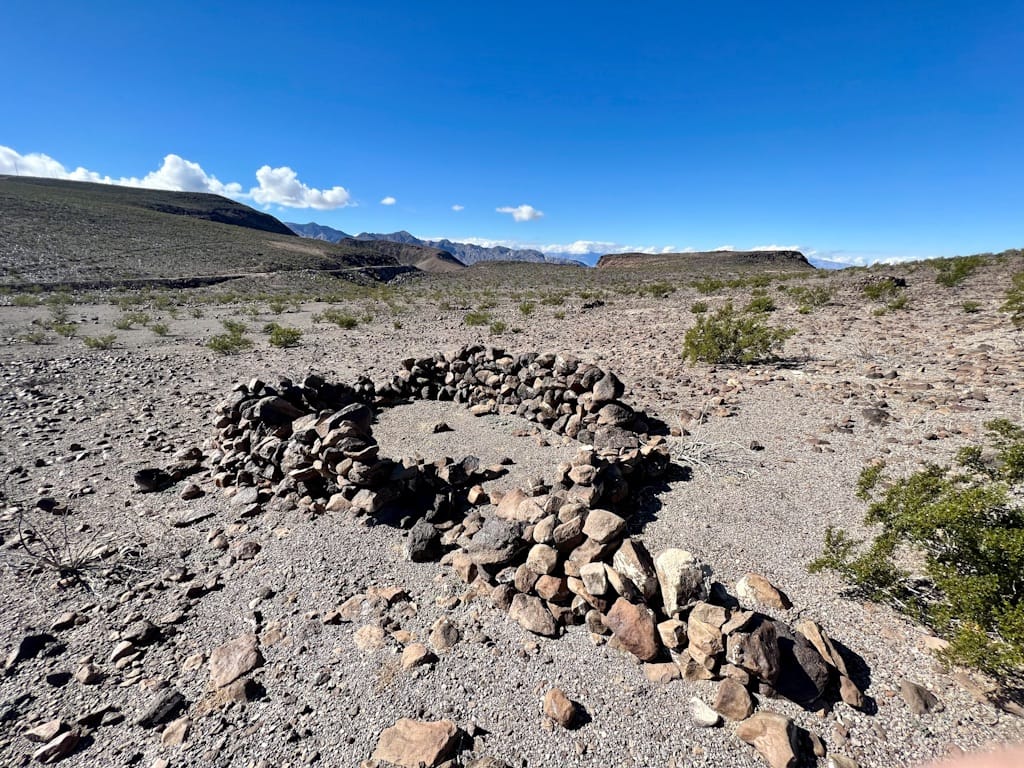
There was quite a large structure here at one one point on the north end of the site. The opening at the front here is larger than any of the small ruins.
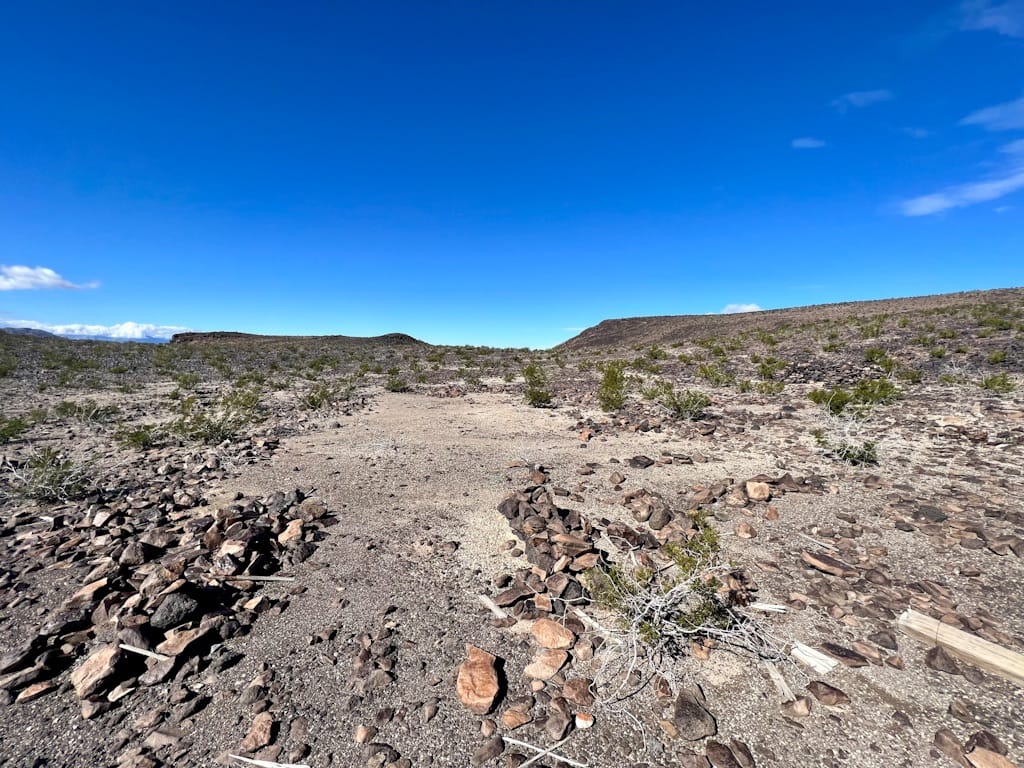
This is the only artifact I found other than rusty cans and broken glass.
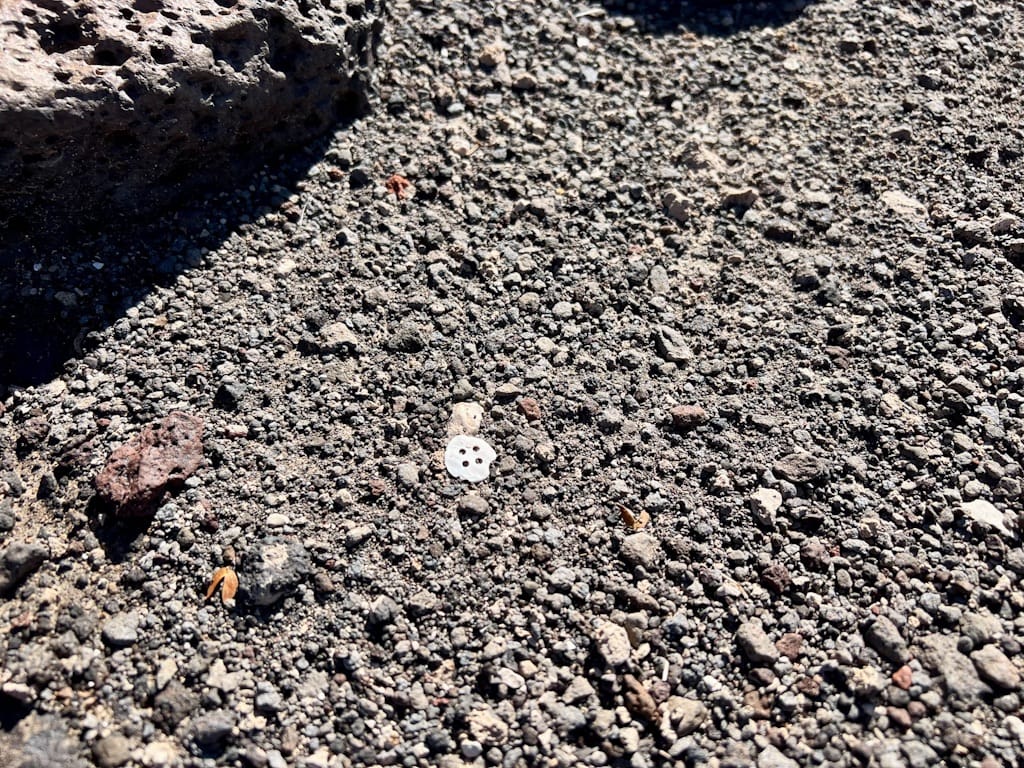
Looking back from the railroad.
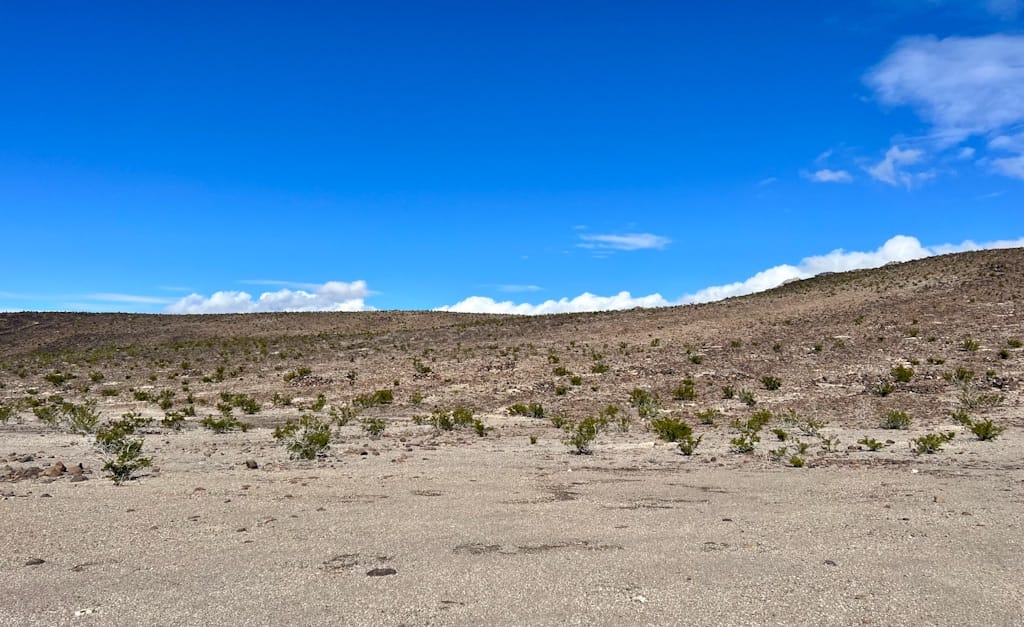
Entrance road and possibly remnants of a gate.
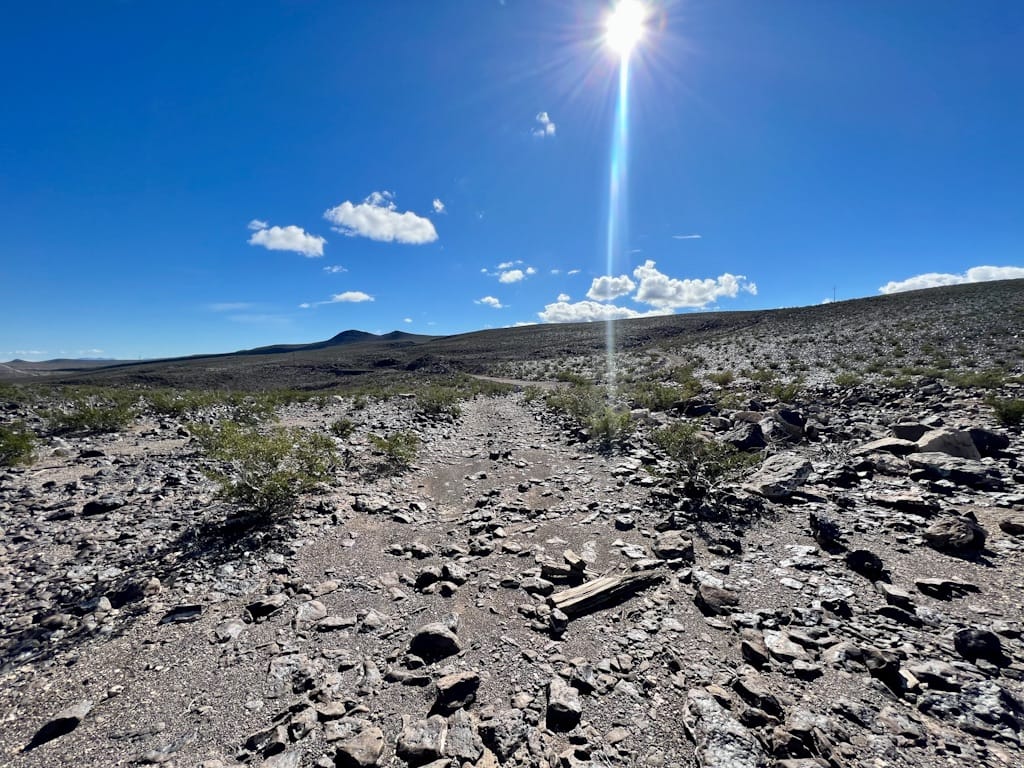
The old railroad bed. No drainage cuts or culverts. Surprised it's still standing.
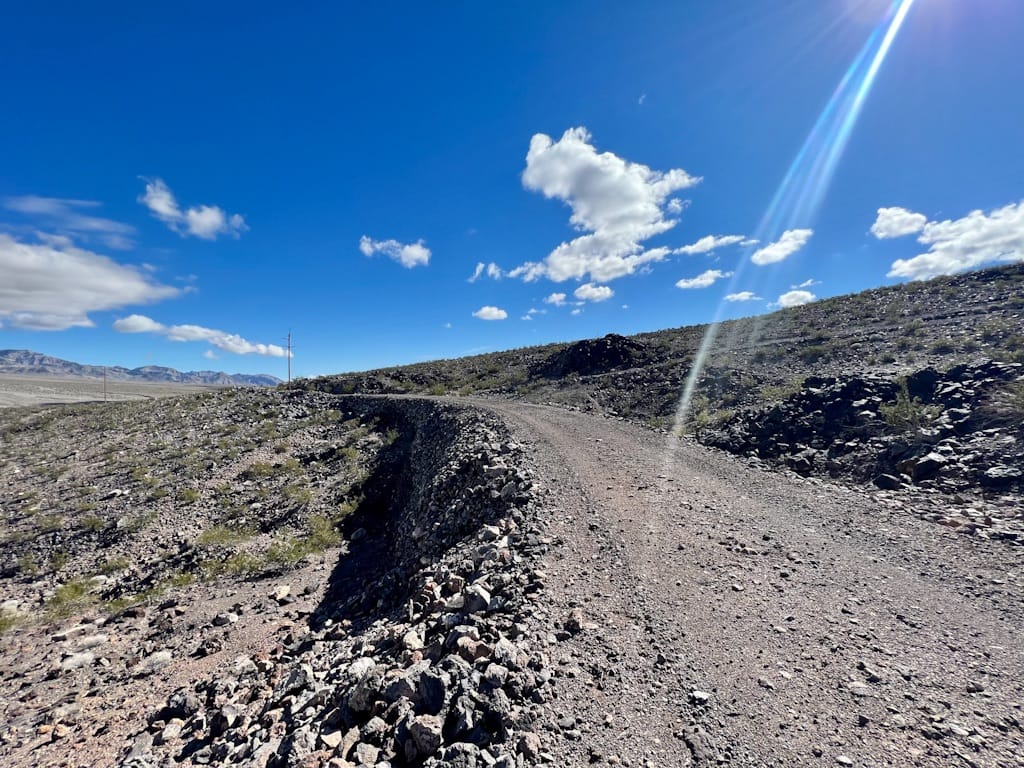
This old trestle however is long gone.
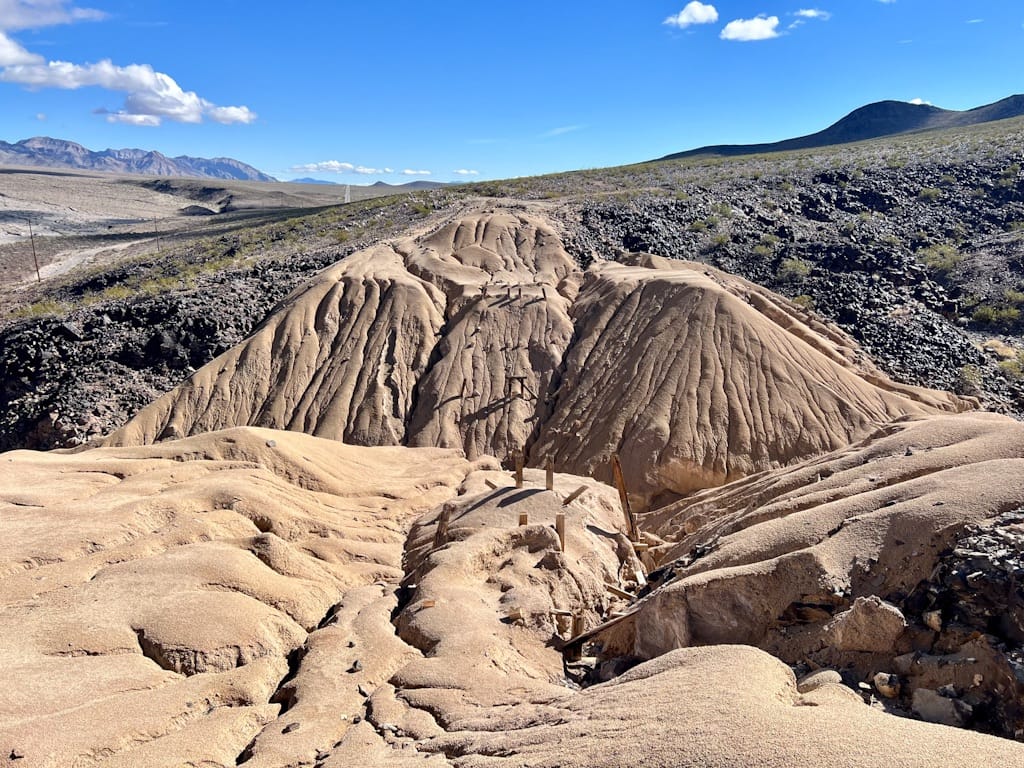
This is definitely a strange old spot. I wish I had an historic photo of it to see what it was like in it's heyday. It's pretty amazing to think of the tough, sparse life that these immigrant workers lived tryin to eek out an existence in this wild, unforgiving terriotry.
Be sure to check out my website for more of my unusual finds & adventures across the desert Southwest and especially Death Valley National Park: Pockets Full of Dust.
